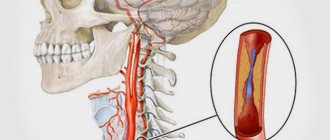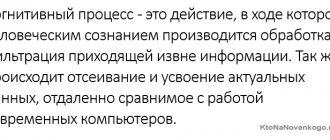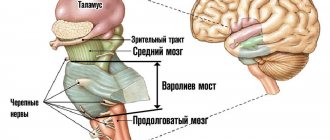general information
In recent years, the frequency of cases of ICP in childhood has increased sharply, but this is due to the development of examination methods, which has led to overdiagnosis based on indirect symptoms. It is important to understand that intracranial hypertension cannot be an independent diagnosis and is only one of the signs.
In children, due to the structural features of the cranium, pressure inside the skull is a relative concept, and even the identification of signs of pathology on ultrasound without the presence of other symptoms does not indicate the presence of the disease. Any deviations in the structure inside the head may be normal if there are no complaints or signals of brain damage.
Signs of ICP in a child
Visible symptoms of increased intracranial pressure in children under one year of age may include:
- constant monotonous crying;
- swelling of the fontanelle;
- vomiting like a fountain;
- persistent anxiety of the baby;
- sleep disorder;
- decreased appetite;
- convulsions;
- the appearance of convergent strabismus;
- an increase in head circumference against the background of divergence of the skull bones.
Individually, these signs cannot indicate the presence of ICP, but in combination, especially with neurosonography data, which can illustrate the systematic growth of the ventricles of the brain, they indicate obvious hypertension.
Symptoms of high intracranial pressure in children over one year of age may include:
- bouts of vomiting, which brings temporary relief;
- constant nausea not associated with eating;
- confusion and even loss of consciousness;
- unmotivated irritability;
- lethargy, general weakness;
- dizziness;
- severe headaches without clear localization that do not go away after taking painkillers or subside for a short time;
- convulsive conditions;
- decreased visual acuity;
- lethargy;
- papilledema during ophthalmological examination;
- feeling of fog before the eyes after bending over.
In adolescents, additional symptoms of increased intracranial pressure may include unmotivated aggression, deterioration of memory and attention, excessive emotionality, and moodiness. Children may complain of difficulty falling asleep and waking up in the morning, attacks of apathy, and paroxysmal pain in the head at night.
Intracranial pressure disorders
The relative closedness of the cranial cavity leads to the fact that a decrease or increase in the volume of its contents is accompanied, respectively, by intracranial hypotension or hypertension. With intracranial hypotension, the cerebrospinal fluid pressure is below 100 mm of water column, with hypertension – above 180–200 mm of water column.
1) Intracranial hypotension. It occurs for a number of reasons. The main one is the leakage of cerebrospinal fluid, or liquorrhea (Latin liquor - liquid; Greek rheo - flow), with fractures of the skull bones.
Especially often, liquorrhea occurs with fractures of the ethmoid bone and the pyramid of the temporal bone, as well as the bones of the base of the skull, in which both layers of the dura mater are torn, followed by the leakage of cerebrospinal fluid through the nose. With a fracture of the ethmoid bone, liquorrhea from the nose is observed. When the pyramid of the temporal bone is fractured, cerebrospinal fluid penetrates into the tympanic cavity of the middle ear. If the eardrum is damaged, cerebrospinal fluid leaks from the ear. If it is intact, the cerebrospinal fluid enters the Eustachian (auditory) tube, which connects the middle ear cavity with the nasopharynx. From the auditory tube, the cerebrospinal fluid enters the nasopharynx, and is then released through the nose and partially swallowed.
Another cause of liquorrhea is medical manipulation: removal of a significant amount of cerebrospinal fluid during puncture of the ventricles of the brain or liquor tanks, as well as a technical error, that is, damage to the dura mater with a needle that is too thick. The danger of liquorrhea is that the risk of infection of the brain and its membranes increases significantly.
With intracranial hypotension, the state of the subarachnoid space surrounding the brain—the cerebrospinal fluid “cushion”—changes. In this case, a change in the tension of the vessels and nerves that perform the function of “anchor” formations occurs, as well as irritation of the meninges.
Clinical manifestations of liquor hypotension:
- persistent diffuse headache occurs, especially intense in the back of the head (“drainage” or “puncture” headache, if it is associated with cerebrospinal fluid sampling);
- headache intensifies with rapid turns of the head, walking (“every step hits the head”), moving from a horizontal to a vertical position;
- headache is often accompanied by nausea, vomiting, unsystematic dizziness (uncertainty when standing, moving), and a feeling of “fog” before the eyes. If the patient lies in bed for some time with the leg raised, the headache decreases;
— lethargy, apathy, increased fatigue, impaired concentration, and a tendency to increase heart rate (up to 85–100 beats per minute) are also characteristic;
- mild signs of meningeal syndrome may be detected - “meningism” (the term indicates irritation of the meninges of non-inflammatory etiology).
Treatment of cerebrospinal fluid hypotension: bed rest, avoidance of physical activity, drinking plenty of fluids, elimination of the dural defect.
2) Liqueur hypertension. It occurs when the total volume of tissue located in the cranial cavity increases. This occurs for various reasons: cerebral edema, venous congestion, hydrocephalus, space-occupying processes (tumor, abscess, parasitic cyst, infectious granuloma, etc.), various damage to the brain and its membranes (meningitis, encephalitis, arachnoiditis, traumatic brain injury, eclampsia pregnant women, status epilepticus), hyponatremia with the flow of water from the blood into the brain tissue, hypoxia, intoxication. With craniostenosis and depressed fracture of the bones of the calvarium, a decrease in the volume of the cranium is observed.
There are two stages of development or existence of intracranial hypertension.
1. The compensated stage is a condition in which the increase in the total volume of intracranial tissue is compensated by a decrease in the amount of blood and cerebrospinal fluid. In this case, the blood moves from the vessels of the cranial cavity to the reserve vascular spaces, and the cerebrospinal fluid begins to be intensively absorbed and/or its secretion slows down. This stage does not manifest itself clinically.
2. When reserve capacity is depleted, the 2nd stage occurs - decompensation of intracranial hypertension with characteristic and increasing symptoms. Cerebral circulation is impaired, as perfusion pressure in the vessels of the brain drops (it is defined as the difference between mean arterial pressure and intracranial pressure). If the perfusion pressure is below 50 mm Hg. Art., the stage of decompensation begins - arterial blood flow becomes insufficient. When the difference becomes zero, it stops completely.
Clinical picture of intracranial hypertension (ICH):
— at the beginning of the development of ICH it is characterized mainly by paroxysmal headaches, which occur and are most intense more often in the mornings;
- then an increasing diffuse headache of a bursting nature joins. It intensifies with coughing, sneezing, physical stress, moving the head, flexing and straightening the neck, squeezing the veins in the neck;
- “cerebral” vomiting not associated with food intake is observed;
- swelling of the optic discs appears, fraught with secondary atrophy of the optic nerves and loss of vision;
— the most severe complication of intracranial hypertension is the displacement and herniation of brain structures into the cracks between the sheets of the dura mater.
Return to Contents
Causes of pathology
In the first months of life, the main role in the formation of ICP is played by infections suffered by the baby during intrauterine development. These include rubella, herpes, syphilis, as well as malformations of the central nervous system. In some cases, the cause of changes in intracranial pressure in children under one year of age is birth trauma. Experts also associate ICP with prematurity and oxygen starvation of the baby during childbirth.
Common factors that can cause ICP are:
- various non-infectious brain lesions;
- acute neuroinfections;
- hydrocephalus;
- benign and malignant neoplasms (tumors, cysts);
- cerebrovascular accident due to thrombosis, hematopoietic diseases;
- traumatic brain injury;
- acute poisoning;
- abnormalities of brain development;
- hormonal pathologies;
- pathologically early closure of the fontanel;
- obesity;
- long-term use of certain medications;
- abrupt cessation of treatment with certain medications.
Uncontrolled increased intracranial pressure can lead to irreversible changes in the child’s nervous system, depression of cognitive functions, disorders of the respiratory and cardiovascular systems, mental retardation, asthenic syndrome and death.
What is increased intracranial pressure?
Inside the brain there is a system of interconnected ventricles, which are also filled with cerebrospinal fluid (CSF). This protects the human brain from injuries, concussions, as much as possible. The pressure of cerebrospinal fluid on brain structures is called intracranial pressure. Exceeding the permissible norms entails a number of consequences.
The main question for parents is what are the signs of intracranial pressure in a child, and what threat does this pose to the child?
What complications can there be in children? If left untreated, increased intracranial pressure can lead to the following consequences: the occurrence of epileptic syndrome, blurred vision, mental disorders, strokes, disorders of consciousness, breathing problems, weakness in the limbs, etc.
What should parents of a child with this diagnosis know? ICP is not a disease, but only a symptom, a consequence of various diseases. There are several misconceptions among parents regarding increased intracranial pressure. For example, the fact that this is an incurable condition. However, with timely treatment, the child’s recovery is possible. The main thing that needs to be done is to consult a specialist in time and follow the doctor’s instructions.
Treatment
There is no such thing as treatment for intracranial pressure in either children or adults. The goal of therapy is to eliminate the pathology that provoked hypertension, relieve symptoms and eliminate predisposing factors. Treatment directly depends on the cause of the condition and can be conservative or surgical.
The complex of conservative therapy includes various medications:
- antibacterial, anti-inflammatory, antiviral and antiparasitic drugs to eliminate neuroinfections;
- diuretics, the action of which is aimed at preventing cerebral edema;
- nootropics that help preserve cognitive functions;
- sedatives that help reduce the manifestations of psychoneurological disorders;
- injectable vitamins that improve the functioning of the central nervous system.
In cases where conservative tactics do not bring the expected results or the disease cannot be eliminated with medications, surgical treatment is indicated. Depending on the urgency and purpose of the intervention, bypass surgery, external ventricular drainage and decompressive craniotomy are performed.
The prognosis for diseases that provoke ICP depends on the nature of the pathology and the speed of diagnosis. In general, with timely and adequate complex therapy, the likelihood of an unfavorable outcome is greatly reduced.
Prevention of increased intracranial pressure in children
Careful planning of pregnancy, delivery and regular monitoring of the expectant mother, including fetal monitoring, help to significantly reduce the risk of developing diseases associated with intracranial hypertension. Prevention of dangerous infectious diseases through vaccination plays an important role.
Parents also need to ensure that their children follow a daily routine, get enough sleep, and are not exposed to nervous or physical exhaustion. It is important to explain to children the danger that bruises and falls pose, to provide them with the necessary equipment for riding a bicycle or scooter, and not to leave them unsupervised in places where they can get injured. Specialists at the SM-Doctor clinic will conduct a comprehensive examination of the child at the slightest suspicion of increased intracranial pressure and prescribe the most effective treatment and rehabilitation measures if necessary.
Why does pressure in the cranium increase?
The causes of increased intracranial pressure (ICP) in adolescents are slightly different from those in adults. This is often observed during puberty from 15 to 17 years of age, when hormonal changes in the young body intensively occur. In addition, this condition often occurs with severe emotional overload, stress, autoimmune diseases and neurocirculatory dystonia.
Increased production of cerebrospinal fluid and disruption of its outflow from brain structures may indicate very serious pathological processes that occur in the child’s brain:
- inflammatory processes in the spinal cord and brain with meningitis or encephalitis;
- traumatic brain injuries;
- formations in the brain;
- history of birth injuries;
- hypoxia in drug poisoning.
With a gradual increase in intracranial pressure, the child may not present any complaints for a long time, as compensatory mechanisms are activated that normalize the functioning of the central nervous system.









